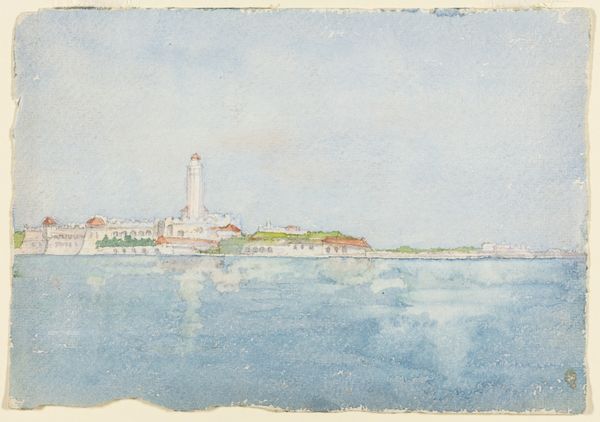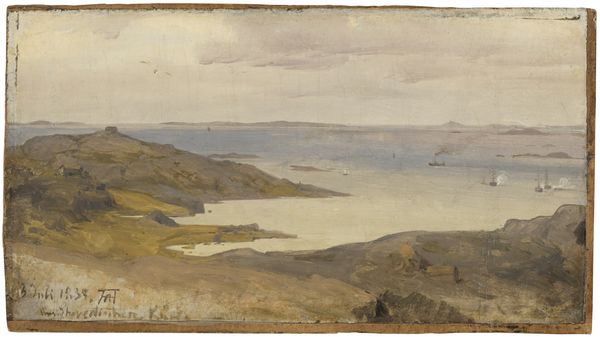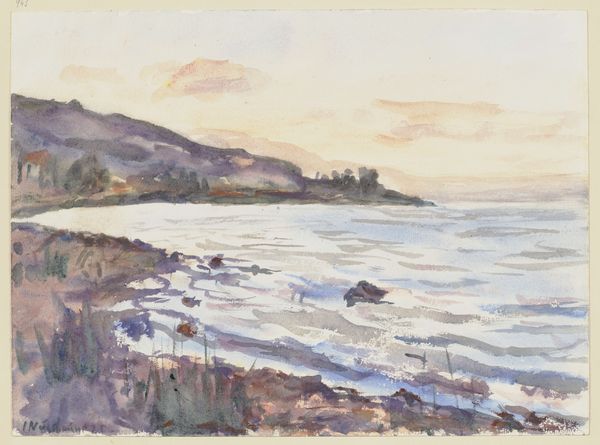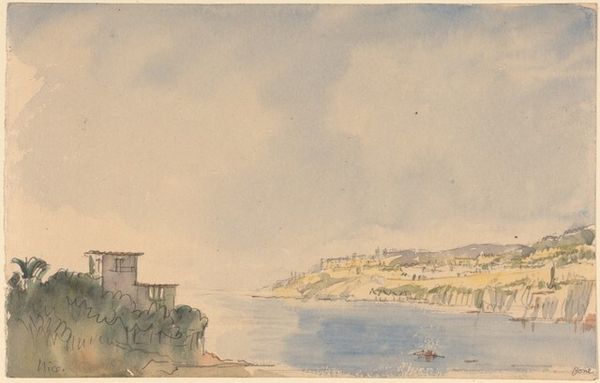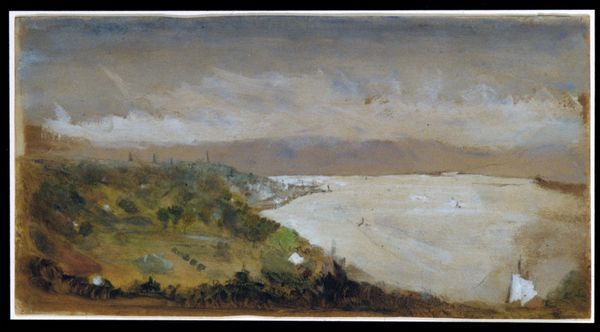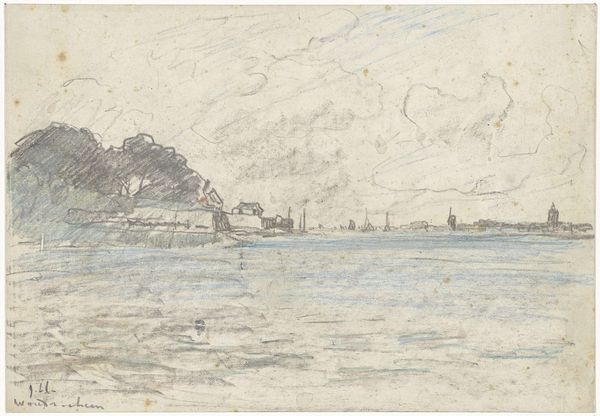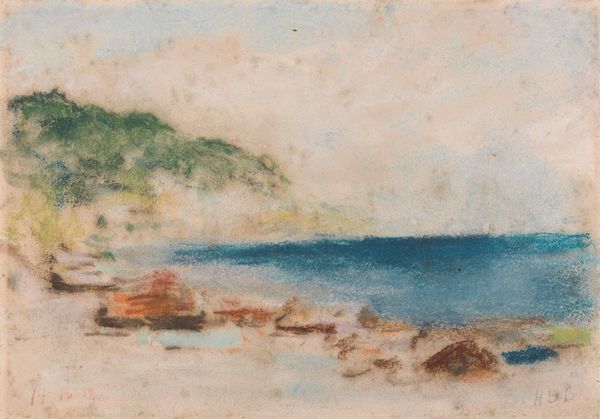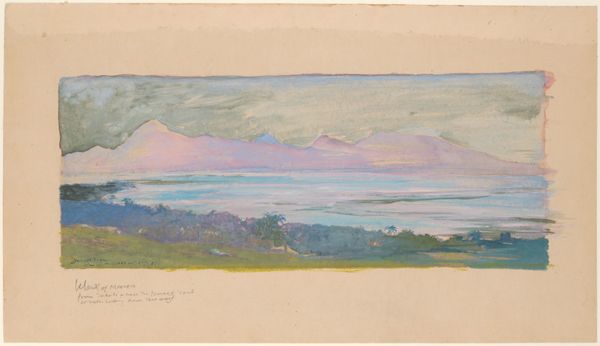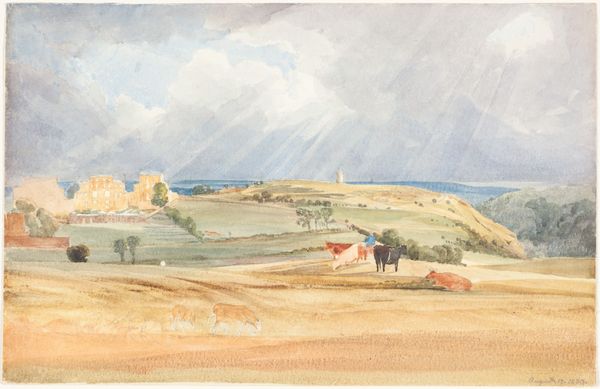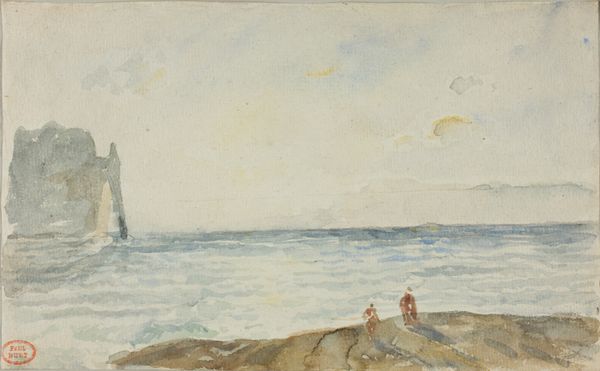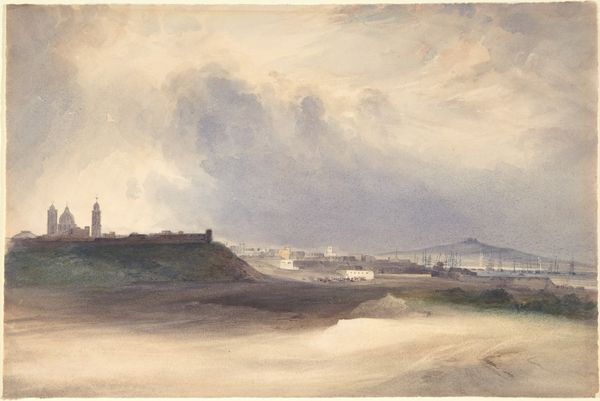
Point West of Algiers, North Africa, Travel Sketch 1896
0:00
0:00
drawing, plein-air, watercolor, architecture
#
drawing
#
water colours
#
plein-air
#
landscape
#
watercolor
#
watercolor
#
architecture
Dimensions: 17.6 × 25.1 cm (6 15/16 × 9 7/8 in.)
Copyright: Public Domain
Editor: There’s such tranquility to this watercolor, isn't there? A muted palette, almost dreamlike. Curator: Indeed. This is "Point West of Algiers, North Africa, Travel Sketch," created around 1896 by Daniel Hudson Burnham. It’s a watercolor drawing capturing a coastal view. What stands out to me is its invocation of Orientalism as a discourse and its inherent colonial power structures. Editor: I see it more as a plein-air sketch, focused on directly capturing light and atmosphere, the physicality of the place. Look at how the watercolor bleeds into the paper; there is a clear exploration of technique. The artist engages with the social landscape in real time. Curator: But "plein-air" itself doesn’t exist in a vacuum. The act of a Western artist sketching in North Africa speaks volumes about the gaze and the implied power dynamics inherent to that situation, where even observing a landscape can be interpreted as staking claim. Editor: Perhaps. Though I am equally drawn to the materials themselves—the paper’s texture, the pigments chosen. How Burnham layers the washes to depict distance and form. There is also the ready availability of supplies; a sign of social status in terms of both financial resource and freedom of movement to pursue creative practice. Curator: That is precisely what reinforces my argument. Access and status inform that creation, positioning it within systems of inequality. The subject is depicted through that singular lens of privilege, even as he tries to evoke a kind of simple landscape, the inherent bias embedded within his choices. How might a local artist have depicted the same landscape? Would the materials have been as easily acquired? Editor: That's fair to say, yet I cannot help appreciate the materiality: paper, pigments, process. A beautiful artifact, but that does not dismiss your valid observations concerning its deeper layers. Curator: Precisely. It is in wrestling with those opposing readings that the artwork finds meaning and invites critical discussion. Editor: I leave here understanding art from another’s socio-historical experience, but still impressed by the technical skill and materiality on display in this small work.
Comments
No comments
Be the first to comment and join the conversation on the ultimate creative platform.

